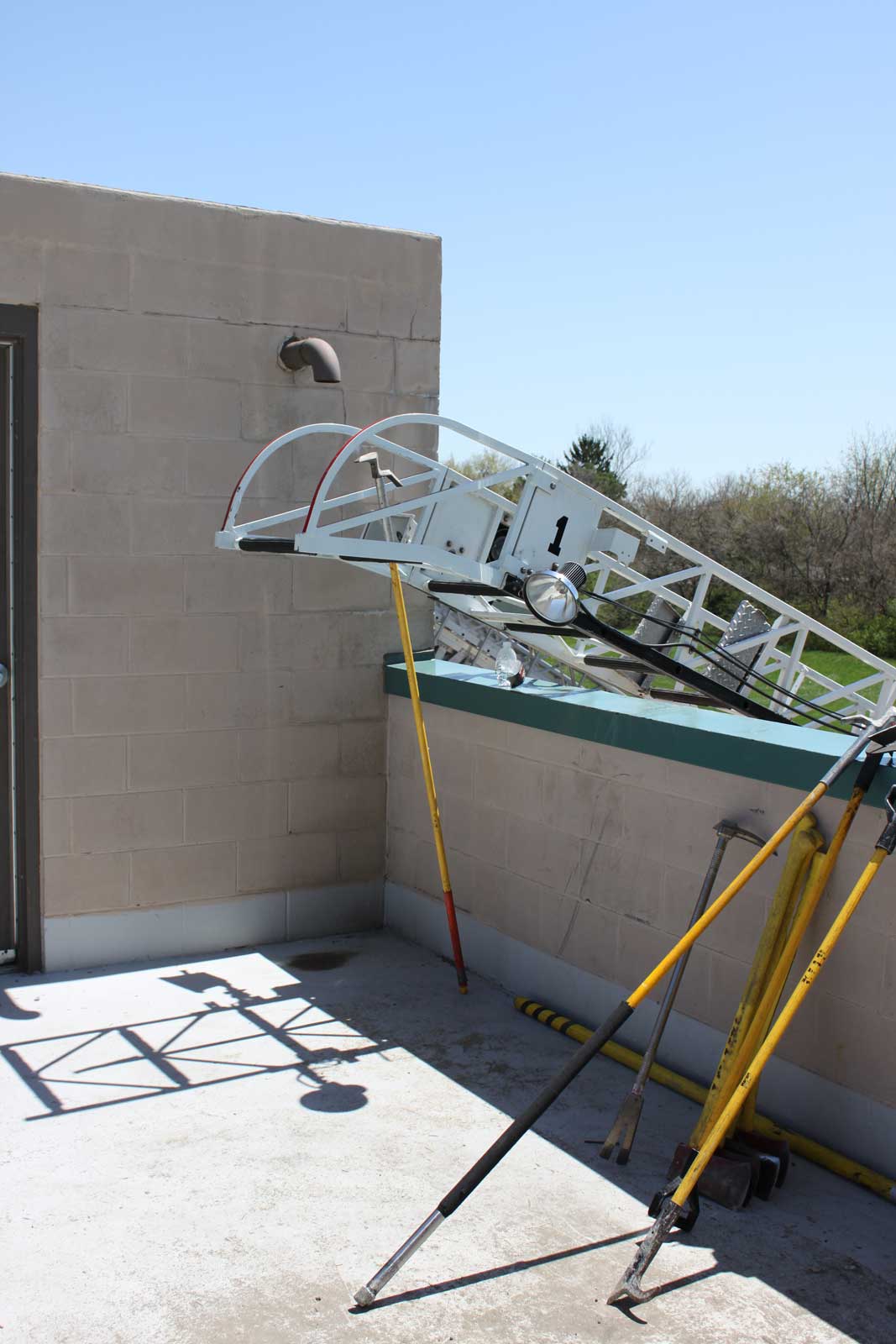
One of the truck company functions firefighters must contend with on the fireground is vertical ventilation, and in some cases this entails dealing with flat roofs.
A flat roof will comprise of layers of materials formed together to make a solid surface. There will be a layer of decking material that will sit directly on top of the metal steel joists or wood joists. The decking material can be corrugated metal pan, plywood sheets, or concrete slabs. This provides the structural integrity of the roof.
When there are concrete slabs being used as the decking material, the strategy or tactics taken to ventilate the structure may need to change. The time it will take to cut a hole in the concrete will outweigh the benefits of vertical ventilating the building. A different approach may need to be taken to render quick and effective ventilation of the structure. There is also the danger of a cut slab of concrete falling inside the building and onto unaware firefighters below once the cut has been completed. There would be no real practical way of avoiding this except by not doing it.
RELATED FIREFIGHTER TRAINING
Truck Company Ops: Rooftop Obstructions
The Great Vertical Ventilation Debate Rekindled: Lightweight Construction and Vertical Ventilation
Maximizing Roof Operations: Flat Roofs
Flat-Roof Operations: From the Street to the Roof and Back
Construction Concerns: Flat Roof Membranes
The metal corrugated pan is the most common type of material used for decking material. It is lightweight, quick to install and repair, and relatively inexpensive. For firefighting operations, cutting through a corrugated metal pan is not that challenging if the right tools are used. A rotary saw is going to be the best tool to use for making this type of roof cut.
On top of the decking material will be a vapor barrier, insulation, and then a waterproofing layer. The waterproofing layer can come in many different styles and types. Common types are tar and gravel, asphalt water membranes, water membrane and rocks, or aluminum.
Getting to the roof will be your next challenge. This will be accomplished either by a ground ladder or by an aerial ladder. Seeing as the roof is flat, the use of a roof ladder is not going to be valuable. It will only become a tripping hazard with it lying on the roof doing nothing. The roof ladder will only work when it is supported at two ends, thus displacing your body weight. On a flat roof, it will be impossible to span the entire roof with a roof ladder.


The roof ladder may be used to provide an easier access path from the aerial tip or platform down to the roof. There may be a gap created from the roof top to the aerial ladder tip due to a parapet wall or the angle of the ladder going up to the roof. This gap may be anywhere from three to six feet. A roof ladder will help in bridging the cap by resting against the aerial ladder or platform tip and down to the roof. See photos 1 and 2.
Once you have made it to the roof, be sure to sound it for structural integrity. Do not step off the ladder and onto the roof without testing it first. This is where your hand tool such as a pike pole or a roof hook will serve its intended purpose. Once structural integrity has been established, keep checking for this as you navigate around the roof. Sound the roof in front of you with the pike pole or roof hook as you walk towards the area that you are going to cut.
If possible, walk along the sides of the roof as this is where you will have an increase in structural integrity and an area to escape should the roof start to compromise below. You can see an example of this with the video taken in Dearborn, Michigan in 2012. The parapet wall became an area of refuge and escape for those three firefighters. Not all ventilation holes will be made near the edge of the roof – sometimes they will be made in the middle. Careful attention must be made to the conditions of the roof and the fire as this task is unfolding.
Which brings us to another point of contention: do we need to go the roof in the first place? Knowing that many roofs are now built with lightweight construction materials and the associated failure times of these lightweight materials, there is an apprehension by many fire departments to abandon the practice of vertical ventilation, especially on flat roofs. The amount of fire load and fuel that rests beneath a flat roof is one of the main reasons why this practice is being abandoned. If you notice in the Michigan video, the fire is at a commercial dry cleaner. There are numerous cleaning chemicals that are used in the dry-cleaning process which are now contributing to the massive fuel load inside. Not to mention all the clothing, machinery, and contents that are also inside.
The decision to go to the roof must be based upon the conditions found upon arrival of the arriving crews. It should not be an automatic default of fireground operations every time. Sizing up the fire conditions, the amount of smoke pushing out, the volume and the color will aid in making this decision.
Another area of concern is going to be other items found on top of the roof. Besides the usual items such as HVAC units, skylights, and water tanks, we are now finding items such as solar panels and rooftop gardens. These newer items are becoming an increasing concern in terms of added weight, access problems, and firefighting operations. You can find more information on these types of roof top obstructions at GreenMaltese.com. Next month we will explore how to make some different flat roof cuts for ventilation purposes.

Mark van der Feyst has been in the fire service since 1999 and is a full-time firefighter in Ontario, Canada. He is an international instructor teaching in Canada, the United States, and India, and at FDIC. Van der Feyst is a local level suppression instructor for the Pennsylvania State Fire Academy. He is also the lead author of Residential Fire Rescue (Fire Engineering Books & Video).
MORE MARK VAN DER FEYST
Firefighter Training Drill: Gate Valve the Hydrant
Firefighting Basics: Master Streams, Part 1 | Part 2
Back to The Basics: Elevated Master Streams

